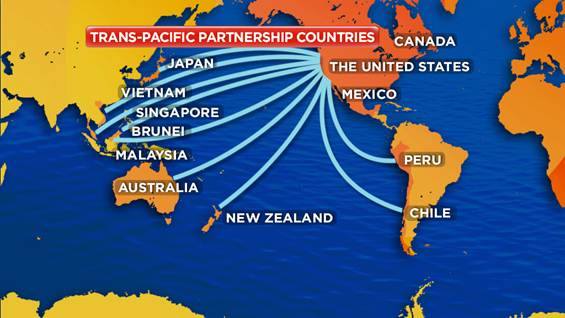Gan Hui Zhen | JD Candidate, Columbia Law School 2018
When the EU Member States introduced EU Citizenship into the 1993 Maastricht Treaty, they arguably did not foresee that this would open up the Pandora’s box that eventually led to the creation of “welfare tourism.” After all, EU Citizenship as originally conceived only granted a small range of civil and political rights – most significantly, the right to vote, and the right to stand as candidate in elections to the European Parliament, as embodied in Article 20, Section 2(a) TFEU.
However, EU Citizenship underwent a radical expansion, enabled by the Court of Justice that treated EU Citizenship as a “catch-all category” whenever an individual challenged Member State legislation that deprived her of equal treatment. EU Citizens were granted almost unfettered access to other Members States’ benefits traditionally reserved for citizens, such as education (Bidar), healthcare (Kohll), and most contentiously, equal access to welfare benefits. The Court of Justice ruling in Baumbast epitomizes this radical expansion, where it propelled the status of EU Citizenship to a “constitutional” level, and this was further affirmed in Ruiz Zambrano – where “the fundamental status of non-discrimination” was awarded to all EU citizens.
Welfare Tourism – what it is and how EU law aimed to address it
While these developments led to a more social Europe, Member States were not ready for the pressure that a transnational regime would place on national infrastructures. Most significantly, the issue of “welfare tourism” emerged. “Welfare tourism” is predicated on the idea that indiscriminate rights lead to welfare abuse of domestic welfare systems by poor immigrants from other Member States that do not provide similar welfare coverage, mainly in the form of job and health benefits. EU Citizenship law was viewed as facilitating “welfare tourism,” since case law mandated that governments must give equal protection to citizens and EU migrants. Citizens were understandably unhappy, likening these migrants to “parasites” that enjoyed benefits without having contributed to the society that had afforded it.
The EU responded to its critics with the Citizenship Directive 2004, which allowed Member States to treat economically active and economically inactive migrants differently. Under Article 7(1)(b), non-discrimination was applied only to non-citizens who had comprehensive sickness insurance and “sufficient resources” to legally reside in the host EU Member State.
The Dano judgment in 2014 was another clear victory for those who cried foul at “welfare tourism.” The Court of Justice affirmed the categorical exclusion of economically inactive citizens from benefitting from the principle of non-discrimination, doing away with the “proportionality” test previously applied by the courts to attempts by host EU Member States of doing so. Dano was a Romanian Citizen who was living on and off in Germany for several years. She was unemployed, and she requested Special Non Contributory Benefits (SNCB) under German law. When German authorities denied her request, she appealed to a German court under EU Citizenship law, which made a preliminary reference ruling to the ECJ. The law seemed clear in that scenario – while the Citizenship Directive allowed Member States to treat economically active and economically inactive migrants differently, a special provision was made for SNCBs in Article 4 of Regulation 883/2004, which mandates that individuals who receive such benefits will benefit from the principle of non-discrimination embodied in Article 18 TFEU. Yet, the court engaged in a roundabout “teleological” reading of Regulation 883/2004 and read it together with the object and purpose of the Citizenship Directive, to come to the conclusion that both the Directive and Regulation did not prohibit Member States from categorically excluding economically inactive migrants from SNCBs.[1] The use of employment as a criterion to distribute welfare benefits in order to pacify critics is best understood in light of the main tenets of national welfare systems. They are based on notions of reciprocity and national solidarity, and so economic activity was viewed as a proxy for integration into the host state that would thus entitle individuals to “members-only” benefits.
The lack of empirical evidence of welfare tourism
However, it is interesting to note that for a phenomenon that has done much harm to the legitimacy of the Union (where even significant curtailment of welfare rights evidently did not go far enough to pacify British voters on June 23), it is striking that “welfare tourism” finds little basis in empirical fact.
Countless reports indicate that the influx of EU migrants has actually been beneficial for Member States, or that allegations of substantial influx are at least unfounded, and that any claims of “welfare tourism” are really just “scare-mongering” or using the EU as a scapegoat for more fundamental, domestic social issues. A report by the consultancy firm ICF-GHK for the Commission stated that an overwhelming majority of those who move from one EU country to another do it for work and not to receive social benefits. Euractiv cites data showing that in Cyprus, the estimated healthcare spending on economically inactive EU migrants stands at between 2.9% and 3.9% of total health expenditures. Average spending is similarly low in other countries such as Ireland (1.8–2.3%), the UK (0.7–1.1%) and Denmark (0.2–0.7%). The Institute of Employment Studies (IES), an independent apolitical international center of research and consultancy in employment policy and human resource issues did research into this matter as well, and found that overall, EU migrants are less likely to claim benefits than UK nationals, with 34 percent of EU migrants receiving some form of benefits (in-work and out-of-work) compared to 40 percent of UK nationals. As of February 2015, only 2.2 percent of the total number of people claiming benefits were EU nationals. The IES website states that “IES’ findings are in line with a swath of other research which also shows that EU migrants are less likely to claim benefits than UK nationals, not least because of their high levels of education and employment.”
In light of these weighty empirical results, it is shocking that “welfare tourism” has destroyed the legitimacy of the EU to the extent that it has. Even if one considers that empirical research has its limitations, surely the weight of evidence suggesting that the influx of EU migrants is actually beneficial to Member State economies would dent the credibility of any claims of “welfare tourism.”
But it did not. Talks about the harms of “welfare tourism” continued, making it to the negotiation agenda between David Cameron and the EU in early 2016. Cameron emerged victorious – the EU affirmed the Dano judgment, limited exportability of childcare benefits under Regulation 883/2004, and even allowed the UK to adopt an “emergency brake,” which enabled Britain to restrict and phase in EU migrants’ access to work benefits for the 4 years after they first arrive. It was clear that it was no longer an issue of protecting national welfare models – it was a general pushback against the “intrusion” of EU law and policy into the national sphere.
The way forward
But perhaps it is not all doom and gloom. The legitimacy of the EU is key. Thus, while these developments may have been less than ideal for the welfare of EU Citizens, they may have been the most practical option for the EU, since these normative ideals were “luxuries” that the EU could not afford in light of its legitimacy crisis.
Furthermore, the impact of these developments cannot be overstated. It is wrong to say that EU Citizenship is now a totally void concept. The other civil political rights and fundamental social rights remain intact. Even in the area of welfare benefits, these developments simply mean that equal access to welfare benefits is no longer a default rule by which all Member States have to abide, but rather, it is now an opt-in.
These developments are important to maintaining EU legitimacy as they shift decision-making power away from the Court of Justice and back into the hands of Member States. This is significant, since the issue of “welfare tourism” was not about granting welfare benefits per se. Rather, it was really the masses crying foul at the right of individuals to challenge Member State legislation with regard to welfare benefits; having Member States go through the arduous, expensive, time-consuming process of having to prove “proportionality” of these measures – a concept that still remains elusive to many; and finally, the potential embarrassment for Member States if their measures are struck down by the Court of Justice, together with the amount of explaining they have to do thereafter. Pre-Dano, the structuring of domestic welfare systems was no longer the prerogative of Member State governments, but lay in the hands of the Court of Justice. Subsequent developments are simply restoring Member State sovereignty over its domestic welfare systems.
Thus, post-Dano developments may actually present the appropriate balance between transnational justice and national sovereignty for the EU. By giving Member States free reign, Member States that feel more mutual solidarity with other Member States are free to grant these rights to all migrants, while others may choose to be less generous with their welfare policies.
[1] See generally, D. Dusterhaus, Timeo Danones et Dona Petentes: Case Note on Dano, 11 Eur. Const. L. Rev. 121 (2015).
Featured Image Source: http://www.express.co.uk/news/uk/488631/NHS-crackdown-to-claw-back-migrants-500m-in-welfare-tourism




